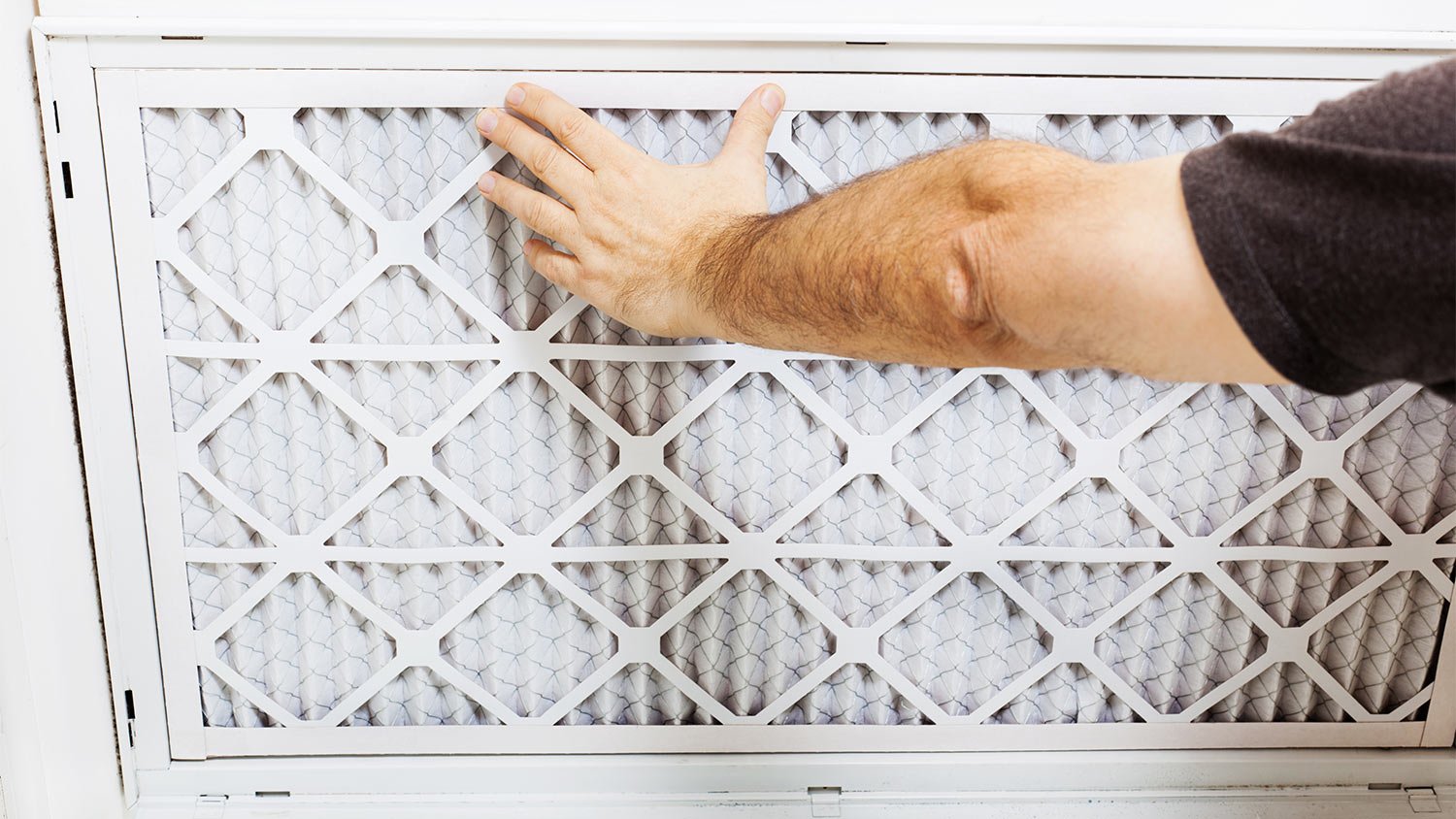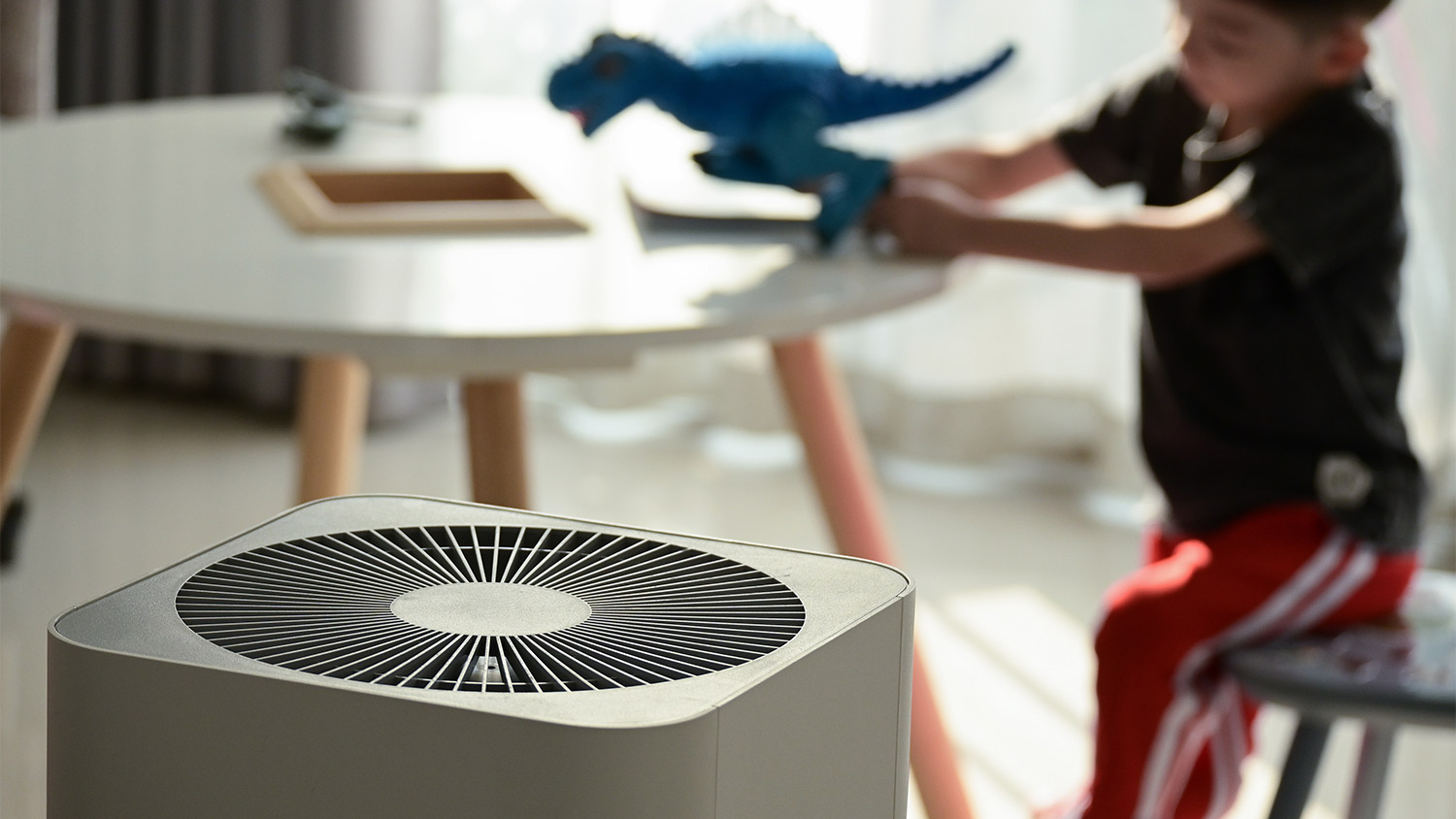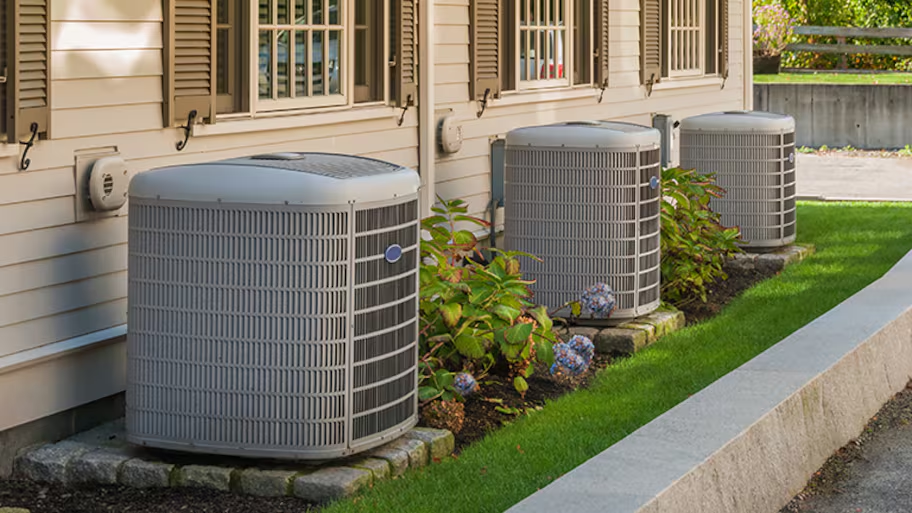
Discover the true window AC unit installation cost to learn about labor, permits, and ways to save on your window AC project.
Turn to your HVAC system for allergy solutions


Hiring an HVAC pro to service your HVAC system annually can help you fight airborne allergies.
Consider adding a HEPA filter with a MERB rating of at least 13 or HVAC UV light for improved home air quality.
Dehumidifiers and air purifiers ensure the air you breathe is clean and dust-free.
Vacuuming and dusting more frequently are two easy ways to reduce allergens in your home.
Those who suffer from allergies or asthma know a deep cleaning can only do so much. Luckily, there are HVAC allergy solutions to allergy-proof your home for a breath of fresh air. Your heating and cooling unit is primed to work with other systems and devices known to help fight allergies. Consider adding a few to your home to better combat dirty air with the help of an AC repair pro. Here are 15 solutions for alleviating allergies through your HVAC system.

Regular filters filter dust; however, they only capture the largest particles. The best HVAC filter for allergies is a high-efficiency particulate air (HEPA) filter that is ultra-efficient and can improve the air quality of your home. These filters work with your HVAC system to catch smaller particles, treat some of the air moving through your HVAC system, and trap more pollutants floating through the air. Choose a HEPA filter with a MERV rating of at least 13 that will clean air to a level ideal for those with severe allergies and respiratory concerns.
One of the best devices for killing allergens is air-purifying HVAC UV light. The light emitted through the UV bulb is proven to eliminate about 99% of microorganisms living in your system. You can’t argue with those results.
While an HVAC UV light can’t remove particles, it can kill dirt, mold, and mildew that travels inside your home. Don’t forget to frequently wipe down surfaces and wash your floors to remove dead particles in your home. You can also hire a local AC repair professional to install this HVAC feature and suggest other methods of allergy-proofing your home.
The recommended humidity level for your home is around 40%. If your home’s humidity level is over that, your HVAC system may contain mold and mildew and blow it around your house. Installing a dehumidifier can help keep mold and mildew under control—two things that don’t do people with allergies any favors.

An air purifying system can work with your existing HVAC to reduce allergies by adding extra filtration. Some even have a UV light that kills germs and gives your home cleaner air. If you can’t hook one up to your HVAC, you can also buy portable air purifiers.
Energy recovery ventilators (ERVs) are built into newer homes. In recent years, newly built homes are more tightly sealed because they’re built to prevent drafts and contaminants from entering the home.
While this method is better than drafty older homes, these homes are excessively humid during the winter and don’t always have the best air quality since air can’t flow in and out as easily. ERVs combat this problem, allowing for more controlled ventilation, helping you avoid allergens.
A good rule of thumb is to have your HVAC serviced twice per year: Once before winter weather sets in and again before the summer months. Much of the recommended HVAC maintenance is DIYable, but you may consider hiring a local HVAC technician to inspect your system more closely. They’ll highlight areas susceptible to mold, debris, and mildew, and ways to remedy the problem.
Clean or change your HVAC filters every 60 days if you have allergies. Again, breathing in dirt, dust, and mold can worsen allergies. HEPA filter or not, experts recommend changing air filters monthly when running your HVAC system a lot. This small change is one of the most effective HVAC allergy solutions and can greatly relieve allergy symptoms.
If your home is ten years old or older, some of your ductwork may have leaks or become unsealed. These gaps make way for allergy-inducing dust and debris. Pests that hunker down in your ducts leave behind hair, droppings, and other waste that can wreak havoc on your allergies or asthma as they blow back into your home.
Running your HVAC system regularly for about 20 minutes will circulate air. Your AC unit will pump in fresh air and pump out stagnant air filled with contaminants and pollutants. If you have a programmable thermostat, you can schedule your system to run as you choose, so you don’t have to remember to turn on your system daily. If you’re in need of a repair for your AC, connect with an air conditioning repair company near you.
When you vacuum your floors and upholstery, you’re removing pet dander, dust, dirt, and other irritants that often cause allergies to act up. Vacuuming a few times each week, particularly if you have pets or rugs. This cleaning task is a great habit to practice if you want to keep your home free from dust and grime.
Vacuuming can help you keep the air in your home fresh, and so can dusting regularly. Dust quickly collects on nearly every surface in your home, not only your floors. At least once per week, dust all the surfaces in your home, including windowsills, tables, door frames, baseboards, and anything that collects dust frequently. For better results, use a natural dusting spray on your duster or cloth.
When you’re breathing deeply at night, pets on your bed and in your face aren’t likely helping you breathe well. While it’s tempting to allow all your furry friends into your bed, it’s best to have them sleep in their own beds (which you should also wash regularly).
If you can’t say no to those adorable dog or cat eyes, change your sheets and pillowcases even more frequently to wash the pet hair and dander off them.
Certain plants help purify the air in your space. Snake plants, ivy, palms, daisies, and spider plants are well-known for adding a breath of fresh air to homes. While these plants can’t fully replace an air filter, having them in conjecture with other air filter systems can help you breathe easier.
Dust mites and bed bugs can wreak havoc on your home when they gather in places that aren’t washed frequently, including your bedding. To avoid these irritants, opt for allergen-proof bedding that prevents these creatures. 100% cotton materials often help prevent mold spores and dust mites from gathering, but other microfiber covers for your mattress and pillows will also work well.
With warmer weather more frequent in the fall and winter months, airing out your house is the best way to get fresh air into your home. When it hits 60 degrees in February, open your windows for a few minutes or hours to give your lungs a break from breathing in stale air. During warmer months, leaving your windows open instead of running the AC can also help you get air into your home.
From average costs to expert advice, get all the answers you need to get your job done.

Discover the true window AC unit installation cost to learn about labor, permits, and ways to save on your window AC project.

HVAC replacement costs depend on a lot of factors, like unit type, size, and labor. See what you can expect to pay for HVAC replacement here.

The cost of boiler repair depends on the specific issue. Read our expert guide, which breaks down boiler service costs so you can budget accordingly.

A problem with your heat pump can lead to a house that’s too cold or too hot. Learn the most common heat pump problems—including any weird noises—and their solutions.

Are you considering adding a whole-house humidifier to your home? Keep reading to learn the pros and cons of a whole-house humidifier.

You’ll need to get creative if you want to run your portable AC in a windowless room. Here’s how to vent a portable air conditioner without a window.